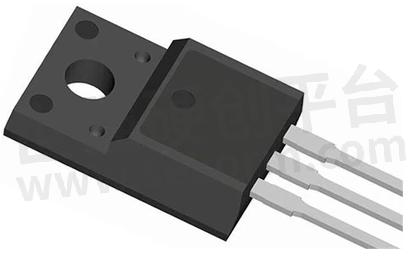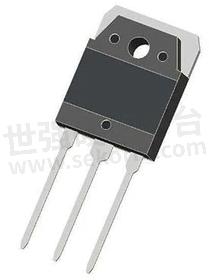Main Differences between Unipolar Power Diodes and Bipolar Power Diodes

A diode is an electronic device made of semiconductor materials (silicon, selenium, germanium, etc.). The diode has two electrodes, the positive pole, also called the anode; the negative pole, also called the cathode, when a forward voltage is applied between the two poles of the diode, the diode is turned on, and when a reverse voltage is applied, the diode is turned off. The on and off of the diode is equivalent to the on and off of the switch. The diode has unidirectional conductivity, and the direction of the current is from the anode to the cathode through the tube when it is turned on. Diode is one of the earliest semiconductor devices, and its application is very wide. Especially in various electronic circuits, use diodes and components such as resistors, capacitors, and inductors to make reasonable connections to form circuits with different functions, it can realize multiple functions such as rectifying the alternating current, detecting the modulated signal, limiting and clamping, and stabilizing the power supply voltage.
Whether it is in common radio circuits or in other household appliances or industrial control circuits, traces of diodes can be found.

Fig.1
Bipolar Diode
A bipolar diode is a diode composed of a PN structure. The PN junction is a structure formed by direct contact between a p-type semiconductor and an n-type semiconductor. The holes in the p-type semiconductor and the free electrons in the n-type semiconductor combine in the junction region to form an electric barrier. Under the action of forward bias voltage, the potential barrier is reduced, and electrons and holes can flow through the junction region, making the diode in a forward conduction state; Under the action of reverse bias voltage, the potential barrier expands, making it difficult for electrons and holes to pass through the junction region, and the diode is in a reverse cut-off state. The characteristics of forward conduction and reverse cutoff are the basic characteristics of bipolar diodes.

Fig.2
Main Differences Between Unipolar Power Diodes And Bipolar Power Diodes:
In terms of main applications, unipolar power diodes are usually used in high-frequency applications such as switching power supplies and inverters, while bipolar power diodes are mainly used in rectification, drive, and protection circuits in power electronics applications.
In terms of the figure of merit of the device, unipolar power diodes usually have a lower turn-on voltage drop and faster switching speed, which are suitable for high-frequency applications. Bipolar power diodes tend to have higher reverse withstand voltage and larger current capacity and are suitable for high-power applications.

Fig.3
- +1 Like
- Add to Favorites
Recommend
- Electric Vehicle Malfunctions Due to Lack of Fuses or Diodes
- Unipolar Magnetic Switch Integrating TMR Magnetic Sensor, Supporting 1.8~5.5V Wide Range Supply Voltages
- Applied Power Microelectronics and Sekorm Announced a Distribution Agreement that Brings ESD, Surge Protection Devices, Diodes and More
- Building Excellent Intelligent Meter Solutions with Diodes, Transistors, LDOs and EEPROMs
- Coherent Announces New Factor Series Diodes
- What are the Classification and Characteristics of TVS Diodes?
- Littelfuse Introduces TPSMB-L Series Automotive TVS Diodes with Industry-Leading Low Clamping Voltage
- Yint Electronics Recommends Using a Varistor for Input Overvoltage Protection of Smart Meters
This document is provided by Sekorm Platform for VIP exclusive service. The copyright is owned by Sekorm. Without authorization, any medias, websites or individual are not allowed to reprint. When authorizing the reprint, the link of www.sekorm.com must be indicated.


















































































































































































































































































































































































































































































































































































































































































































































































































































































































































